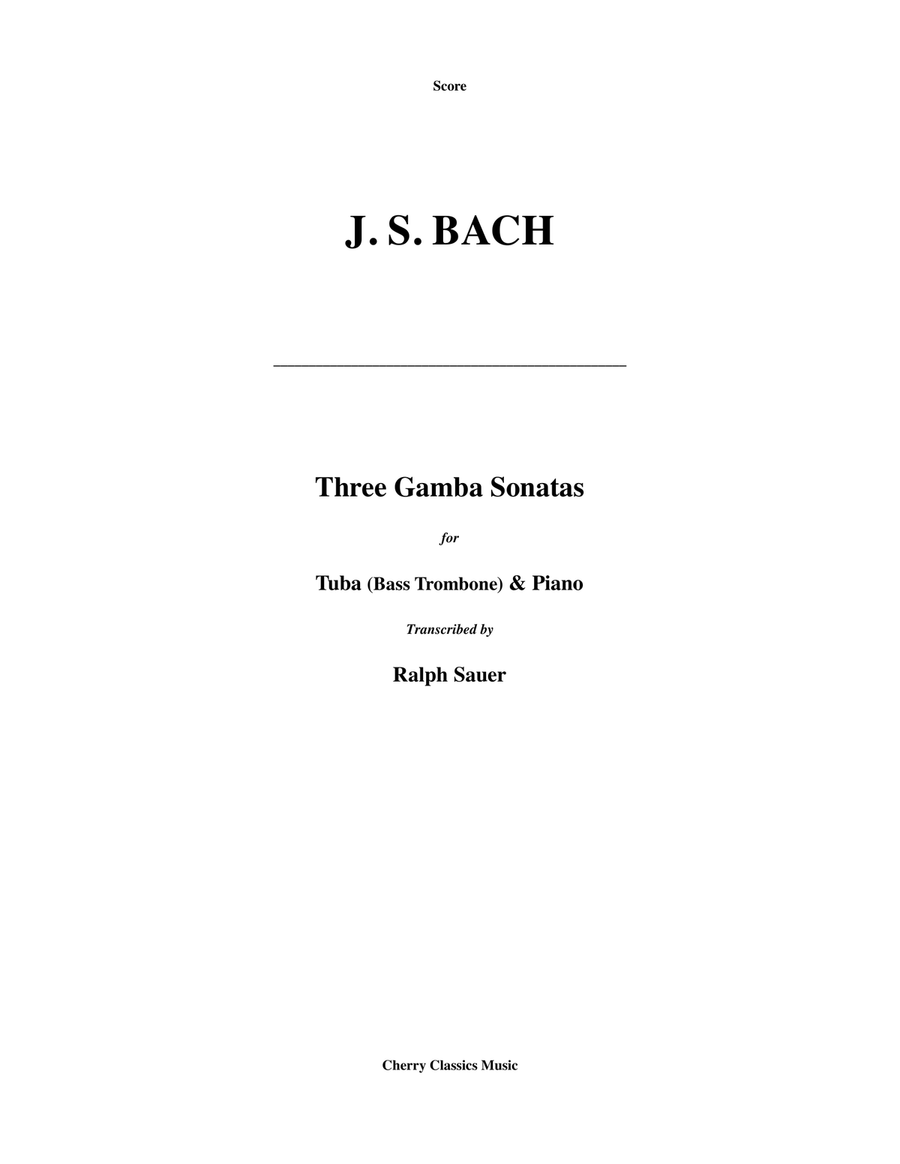Piano,Tuba - Level 5 - Digital Download SKU: A0.811026 Composed by Bach Johann Sebastian. Arranged by Sauer, Ralph. Baroque,Classical,Renaissance,Romantic Period. Score and part. 76 pages. Gordon Cherry #4728681. Published by Gordon Cherry (A0.811026). J. S. Bach, the genius of Baroque music & the father of Western Music composed 3 exquisite Sonatas for Viola da Gamba. They are now available for Tuba or Bass Trombone & Piano, beautifully transcribed by retired Principal Trombonist of the Los Angeles Philharmonic, Ralph Sauer. This edition is truly the only version that fully exploits the possibilities of the Tuba or Bass Trombone. A must for all serious performers. Each work is a full Sonata of at least 15 minutes in length and exploits the technical and musical attributes of the Tuba or Bass Trombone. For advanced performers.
